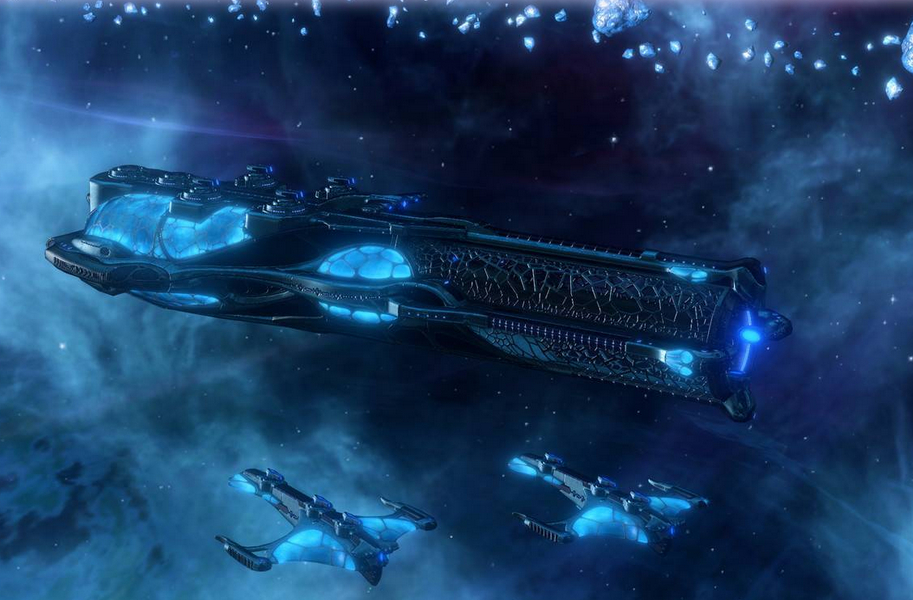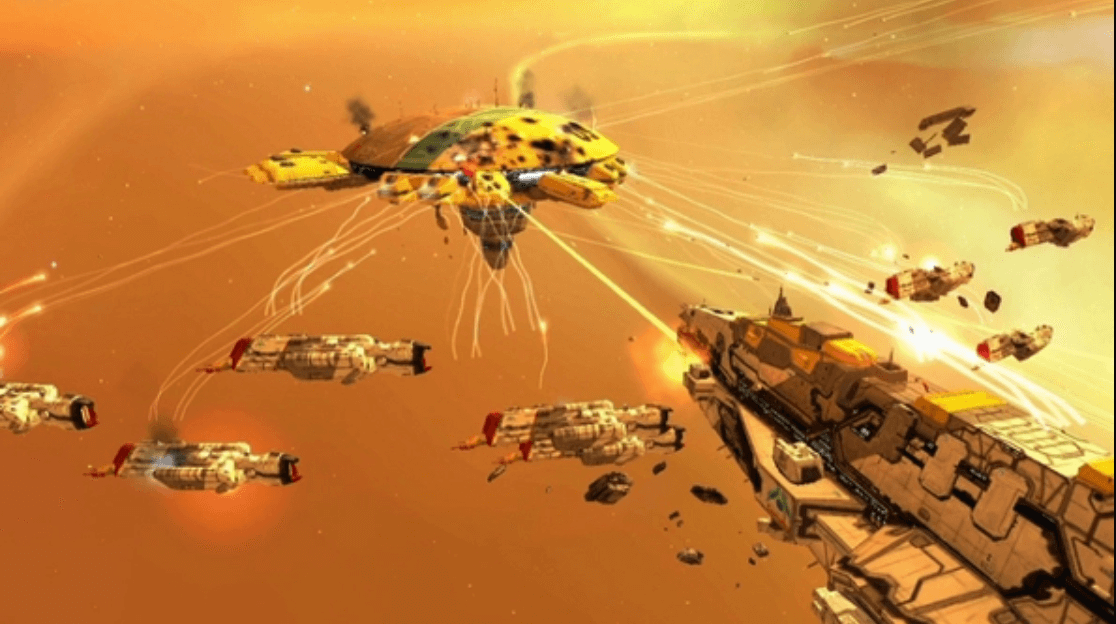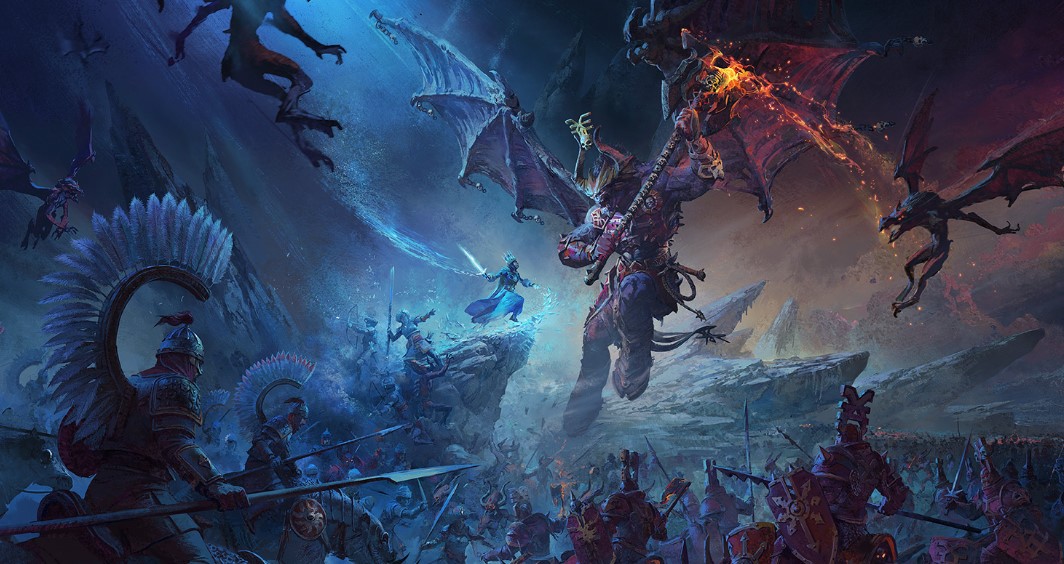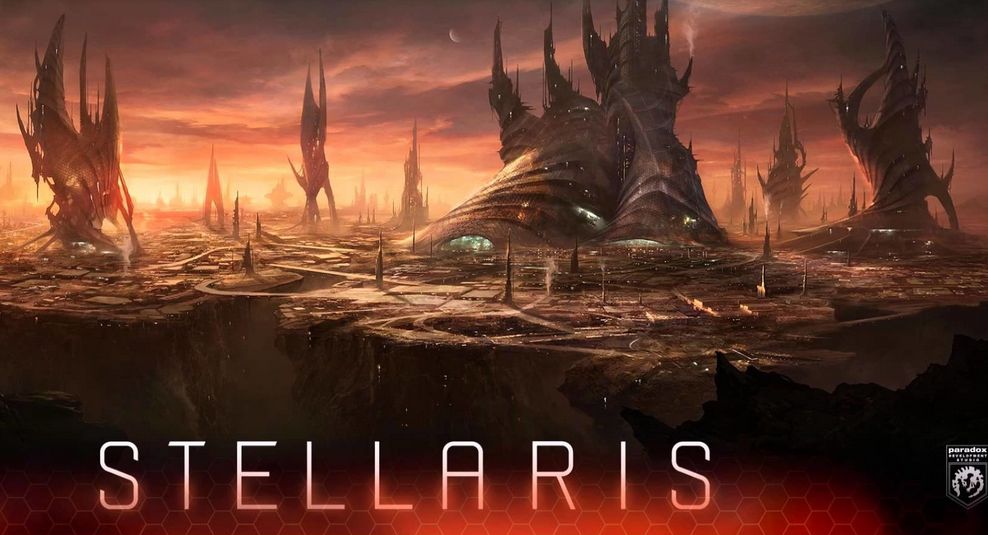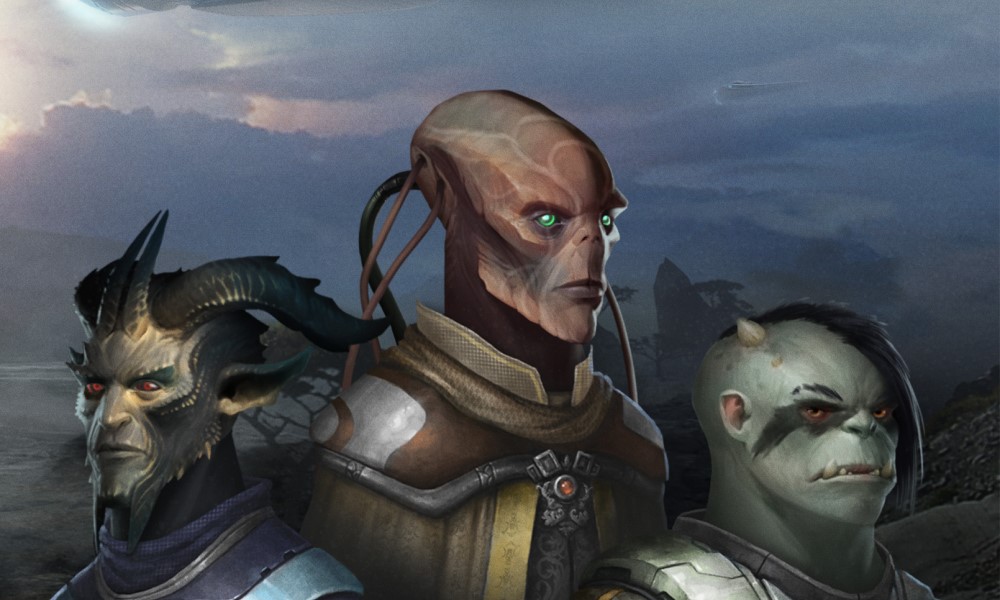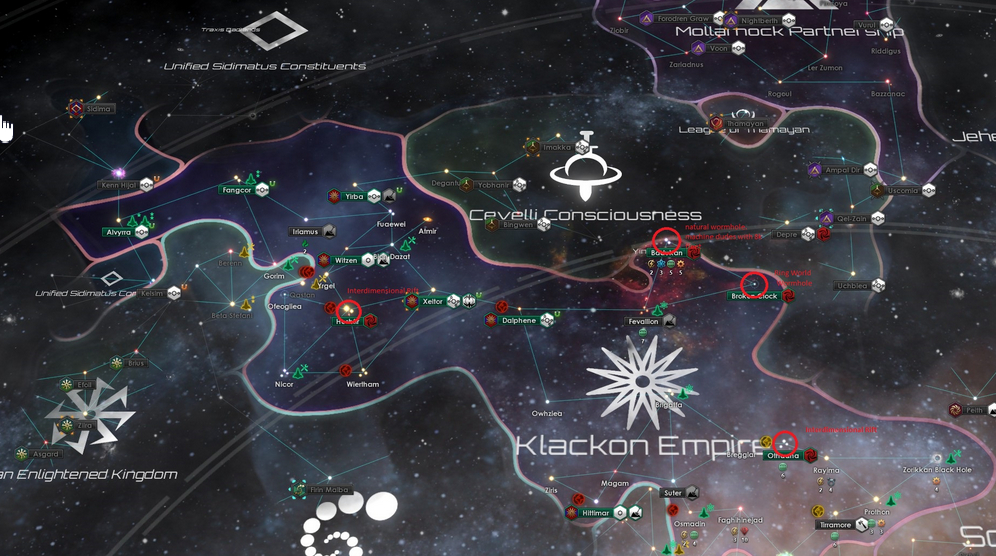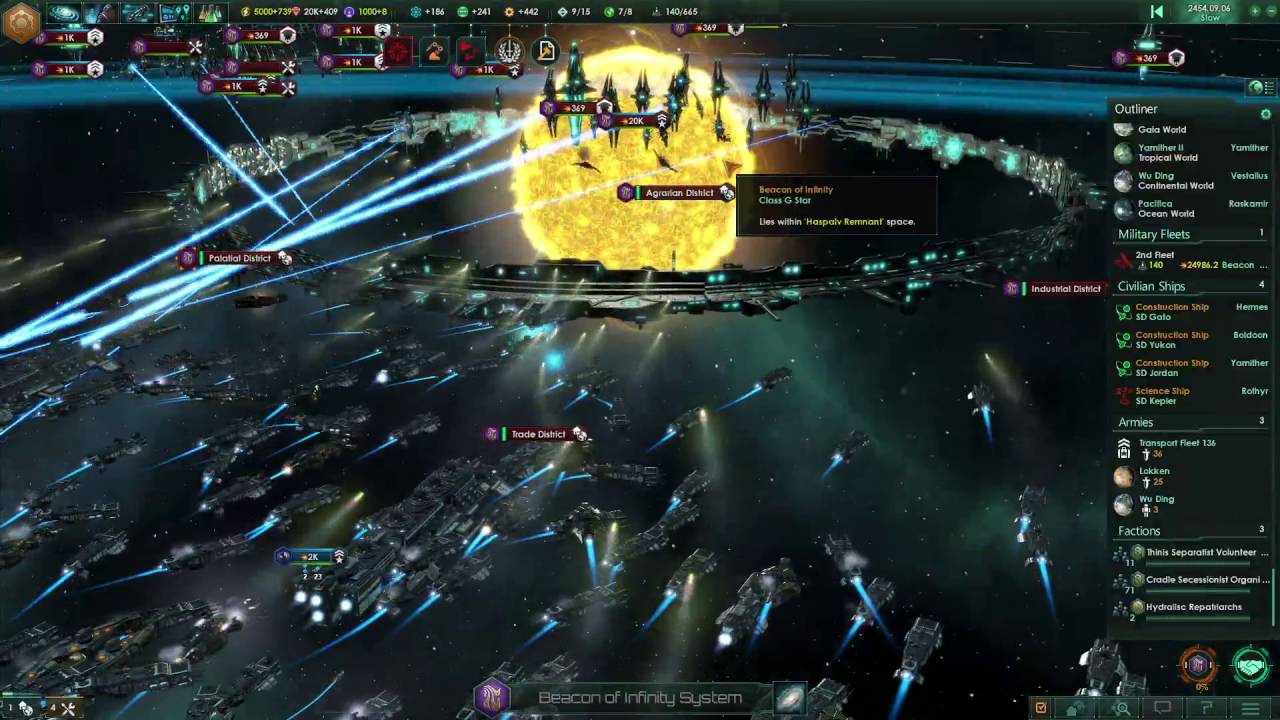
Which Origin will make your next game one of your most memorable?
Wondering which Origin you should choose for your next Stellaris run? Want to know which origins give you the biggest leg up so that you're ready for the next multiplayer session? Just want some nice flavor for that new custom civilization you finished making? We have you covered! Check out this list of the best, most flavourful, and meta-defining Origins.
10. Post-Apocalyptic
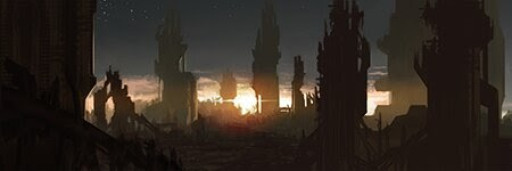
A once-thriving city, now just desolate ruins in a nuclear wasteland
Whether you want to play as a civilization that clawed its way back from the brink of nuclear extinction, just want to be able to use Tomb Worlds this run, or are a huge fan of the Fallout franchise, Post-Apocalyptic is the origin for you. It's one of the more underrated origins, as the benefits of being able to live in some of the harshest environments the galaxy has to offer is not something to be sneezed at, especially if you have a habit of nuking enemy worlds into barren wastelands.
Your homeworld starts as a Tomb World, freshly nuked, and your species has the “Survivor” trait, allowing them to colonize other Tomb Worlds you find out there among the stars. Thanks to their hardiness, leaders from your Founder species will live slightly longer, since harsh living conditions like those found on post-nuclear-apocalypse planets tend to produce more resilient individuals.
This origin pairs incredibly well with empire types that can and will bombard enemy planets until they are barren Tomb Worlds devoid of all life. The worlds you devastate will only be usable by you afterwards, at least for the first half of the game, and your leaders will live an extra decade or so, giving you a chance to get that much more experience. This additional lifespan is made all the more potent by any species or leader traits, edicts, or other mechanics that increase leader experience gain, something to keep in mind during empire creation and when hiring new leaders!
The ability to live on Tomb Worlds doesn’t just lock you into a militaristic and expansionist play style however. It can be incredibly useful when you are boxed in and forced to play tall, as being able to use one or two entire extra planets you might not have been able to use until later in the mid-game can pay economic dividends down the road.
To summarize, Post-Apocalyptic makes you:
- Able to colonize and exploit planets that might otherwise be off-limits and useless to you
- Have slightly more powerful leaders
- Able to fully maximize your playstyle regardless of how aggressive or passive it is
- Able to roleplay as your favorite post-apocalyptic society or faction from other franchises in an interstellar setting
9. Calamitous Birth

Prepare for impact!
Lithoids would not feel complete if you couldn’t bunch up a group of pops into a big meteorite, slam it into the nearest planet, and call the process “colonization.” Thankfully, that is exactly what the “Calamitous Birth” origin allows you to do. When the neighbors ask what all the ruckus is about, you can tell them it’s just a little “planetary percussion” for your “rock concert.”
You will start out on a home planet with a Massive Crater deposit on it (giving you additional maximum districts and mining districts) and a planetary modifier that gives -50% habitability, implying that this homeworld is not the birthplace of your species but merely its first landing site. While on your homeworld the -50% habitability malus isn’t an issue, but it can become a problem on planets that have less than 100% habitability. Lithoids have a natural +50% boost to habitability, but the planetary modifier from this origin essentially cancels that out, so be aware of that when choosing your targets.
If you’re the spiteful type who likes cheesy strats, you can even use this colonization method on planets that you are about to lose in a war, just to spite the enemy when they discover that the 90% habitability ocean planet they were fighting for is now a 40% habitability hunk of rock with a massive hole in it. That’s one way to say “fuck you.”
The meteorite colony ships cost less and take less time to build than their metallic counterparts, making them excellent for quick and cheap colonization. If used properly they can allow for incredibly rapid expansion, resulting in your empire’s economic snowballing picking up sooner and your colonies coming online before everyone else. The habitability malus isn’t even as much of a problem as you might think either. Simply turning the planets affected by the planetary modifier into a planet type with universal habitability (such as Gaia worlds or Ecumenopoli) is usually more than enough to erase the effects of the modifier, though not the modifier itself. So if you happen to get the Grunur Precursor event chain, this origin will allow you to expand into the cosmos cheaper, faster, and easier than you ever thought possible.
In short, Calamitous Birth allows you to:
Colonize and expand quicker, and look cool while doing it
Sabotage planets you no longer have any use for or are about to lose
Eliminate all of its downsides with relics, technologies, or other mechanics
Roleplay as cosmic-scale musicians using entire planets as your drums
8. Remnants
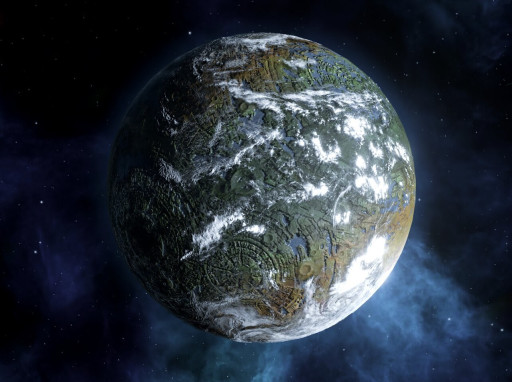
Mere shadows of their past glory, Relic Worlds posses a wealth of knowledge and history
If you ever wanted to play as a truly fallen empire, one whose fall was so complete they have to crawl their way back up the ladder of technology and culture all over again, this is your origin. If you ever wanted to roleplay as the Imperium of Man, this is your origin. If you want to rush an Ecumenopolis as soon as possible without waiting for the Ascension perk, this is your origin.
With the “Remnants” origin you start out on a Relic World that, district-wise, is indistinguishable from a normal planet. It has some fancy tile blockers that you get Minor Artifacts as rewards for clearing, but other than that it's just a “Space Chicago” that you want to restore to an Ecumenopolis as soon as possible. How you do that is by researching the “Anti-gravity Engineering” technology, which will instantly unlock the planetary decision to restore the planet to its former, Trantor-esque glory, but only after a decade of restoration work.
Basically, Remnants gives you:
An early Ecumenopolis, for a sky-high mid-game economy
Plenty of RP and narrative-building opportunities
A good chance of getting lots of Minor Artifacts early on, which can greatly bolster your economy in the short term
7. Life Seeded/Ocean Paradise

Nothing, not even the meta, can compete with natural beauty
I’ve lumped these two together because they really are two different flavors of the same origin: the “One Planet Challenge” origin. Both of these origins start you out with one super-planet and tack on all sorts of reasons why you shouldn’t colonize in the early game for balance’s sake. This makes them perfect for doing the “One Planet Challenge” which is a community challenge that has been around since the days of tiles.
Your home planet will be nearly twice as large as the average civilization’s home planet, and chock-full of resources to boot. This gives you a strong start compared to everyone else, and you won’t have to deal with the woes of early colonization (since you can’t colonize anything else immediately anyway). The origin starts to fall off however near the end of the early game and the beginning of the mid-game as everyone else’s colonies begin to “come online” while you, if you’re lucky or tech-rushing, are only just founding your first colony.
If you aren’t playing this origin with the intention of completing the “One Planet Challenge,” certain event chains, precursors, and anomalies that give you Gaia worlds are your potential gold veins, and it is genuinely worth going to war over anomalies and archeology sites under these circumstances. Otherwise, Relic Worlds and habitats are your best bets for economic expansion, unless of course you simply befriend your neighbors and land yourself a migration treaty long enough to build a few colony ships. Do this enough times with enough nations and you can “collect” a wide enough array of species to colonize every planet in your space, with your gorgeous paradise of a homeworld as your empire’s crowning jewel.
Life-Seeded/Ocean Paradise grants you:
An excellent set-up for beating the game without colonizing
A powerful capital world
An excuse to play like a xenophile, even if you aren’t one this run
6. Resource Consolidation

Efficiency on a planetary scale never looked so majestic
Resource Consolidation is one of the more meta origins that can lend itself to good narrative-building as long as you are creative enough. It's mechanically simple: your machine intelligence stripped its home system of resources and brought them all back to its homeworld after the disappearance (or demise) of its creators. The result is that your starting world is a machine world that you didn’t need the Ascension Perk to create. This is of course fantastic, even if your home system is a little threadbare as a consequence.
The flexibility that a machine world that early in the game gives you will allow you to easily switch your production to meet your empire’s needs as you expand into the stars. You’ll be able to shift from mining to energy and back again depending on the changing needs of your growing empire, which is a level of efficiency that organics can only envy. This origin may be simple, but its power cannot be underestimated!
Essentially, Resource Consolidation gives you:
Near complete economic flexibility and adaptability when starting out as a machine intelligence
The theoretical ability to simply out-produce organic civilizations in the early game
An idea (if you’ve never experienced it before) of what awaits you after taking the “Machine Worlds” Ascension perk.
5. Necrophage

Death, and your new life beyond it, awaits you.
This might be personal bias, but Necrophage is one of the best origins in Stellaris in every category. It’s fantastic for RP and lore-building, but is also very strong mechanically. The ability to convert or absorb other species into your “master race” Founder species is an extremely potent ability in Stellaris. When conquering the galaxy, or just raiding your neighbors for fresh slaves, you can pick and choose based on species who gets “uplifted” to join the ranks of the enlightened via the “Necrophage” purge type.
This means you can keep every species that will make ideal slaves, while turning the remaining “useless” slaves into your far superior and more useful Founder Species. Mind you, this is accomplished by selective, species-wide purging policies, so if you are looking to do this with the Chambers of Elevation you’re going to have to do some pop organizing via resettlement.
If you just want a galaxy full of your master race pops and like the spice that Necrophage adds to the game, try combining the origin with the Fanatic Purifier civic to get the Fanatic Necrophage civilization type. If you want to picture what that’s like, just remember the scene from the Matrix where Agent Smith went around turning everyone into himself. Personally, I would advise having a specific planet designated for these mass conversions, it really helps with stability across your empire.
A smart Necrophage player will, most of the time, leave a bunch of other weak and shattered nations around them that they will treat like farming fields. Every decade or two you declare war, kidnap a bunch of new pops (leaving the planets mostly empty with a few scattered survivors), then mosey on home with your fresh new crop of slaves. You then repeat this process with several other nations before cycling back to the one you invaded first. The “Nihilistic Acquisition” Ascension Perk really, really helps with making these “harvests” go smoother.
This strategy ensures your population will never halt, and that you can grow almost indefinitely without ever touching your perfect slave pops. Of course a thrall world full of the “useless” slaves can work too if you aren’t too keen on going to war all the time, but a combination of these two strategies will likely yield you more slave pops than you can easily convert, so watch out for rebellions!
Necrophage is a strong choice as an origin because:
It gives you the unique ability to turn “useless” pops into your min-maxed Founder species with just the push of a button
The sheer number of roleplay and lore-building opportunities during empire creation and species design are staggering. Lithoid Necrophages and an Aquatic Necrophage Hive Mind are just some of the more interesting combinations
They genuinely offer a unique playstyle compelled by their unique needs as a species that will make you look at Stellaris gameplay differently
They let you fulfill whatever fantasies you may have about turning the entire galaxy into a single, homogeneous species, from Eldritch Abominations to anime girls
4. Shattered Ring
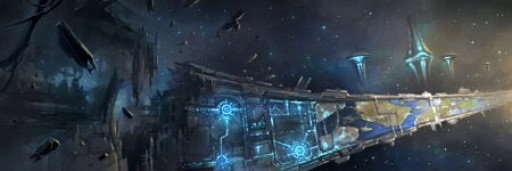
If you like it, put a Ring World on it!
How far the mighty hath fallen! Shattered Ring was once one of the most powerful origins, due to you starting off on a (mostly) intact Ring World. It is still powerful, but not nearly as much as it once was. Nevertheless, it is still strong enough of an origin to make this list.
Shattered Ring starts you off on a segment of a Ring World that looks quite similar to a normal, run-of-the-mill planet, with the small change of generator districts being replaced with trade districts for non-gestalt empires, and that all empires using this origin now get miners that produce alloys in addition to minerals.
In order to restore your Ring World segment to its former glory, you will need to save up 10,000 alloys, clear all 8 Tile Blockers on the segment (which is a tad expensive and time consuming mind you), and research the Mega-Engineering technology. Only then can you enact a planetary decision on your homeworld that will spend the next decade tying up your capital’s building queue in order to make it a fully complete Ring World Segment complete with all of its mega-districts.
The origin still remains somewhat powerful primarily because you start out living on a Megastructure, essentially guaranteeing you will get the Mega-Engineering technology popping up in your research options earlier than most other empires. This makes it great for Megastructure rushes, especially since you will start out being able to just repair 3 out of the 4 sections of your home Ring World (the 4th segment is damaged irreparably) without needing to invest the time and resources of constructing your first Ring World from complete scratch.
Basically, Shattered Ring gives you:
A head start on a Megastructure rush build
An early boost to alloy production
An early-game dependance on Trade Value for energy, which means amenities shouldn’t ever be an issue
A path to an early (and mostly complete) Ring World
3. Here there be Dragons

Hope you've been brushing up on your Draconic
Are you paranoid about losing your capital system in an early war? Yeah I know the feeling. Did you ever wish you could have a friendly Leviathan patrolling your system, ready to rain death down on any attackers foolish enough to violate the sanctity of your capital? Well then this origin is for you. Here There Be Dragons provides you with an actual safety net, a fallback point, a safehouse you can run to if the enemy is too strong.
Here Be Dragons gives you a draconic Leviathan guardian who is similar to (but different from) the Ether Drake in your home system. As long as you feed it and keep it happy with you, you will benefit from its benevolent protection. You can also use dirty tactics like baiting your foe into attacking your home system to let your draconic friend do the heavy lifting in those early wars, but as the game goes on and technology advances, you will want to be careful that you don’t set your dragon up to be slain, unless you’re ungrateful for all of the help they’ve given you.
This Origin is for players who either want safety net and inviolate fallback position in the early game, or for those who just want the RP opportunities that having a pet dragon you can eventually talk to (yes you can talk to it later on) can give you. Not to mention that our big, scaly friend has style and looks very majestic up close. Just because you’re a space empire doesn’t mean you should completely forget about appearances, you have a galaxy full of aliens to impress, regardless of whether you are purging them in the meantime or not.
Oh and did I mention that if your civilization’s ascension to power pleases the dragon enough, it will allow you to hatch, care for, and raise its offspring as your personal attack dragons? I could have sworn I mentioned that.
In short, Here there be Dragons provides you:
A ferocious and stylish-looking Leviathan that will protect your capital system in the early game
A literal swarm of young attack dragons at your command, provided you prove worthy
A Leviathan that is on your side for once, provided you keep it happy
RP opportunities galore, as an entire civilization that has a relationship with a space dragon is bound to have some interesting art, religious beliefs, and societal quirks
2. Scion
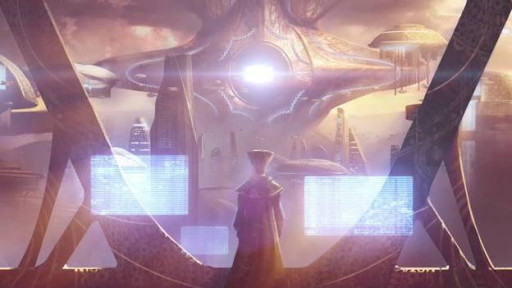
Power older than your species and the wisdom of eons at your disposal
Does playing Stellaris make you feel like you’re back in school, surrounded by bullies? Do you want a bigger, tougher empire to be your guide to the game? Well then the Scion origin is for you! This origin gives you your very own Fallen Empire sugar daddy to spoil you and give you a helping hand now and then. Of course, they may carry you in the early game, but like typical aging parents, they expect you to carry them in the late game, so be warned.
All joking aside, the Scion origin is almost like having someone else in the game who will give you random gifts and help now and then. It’s not just useful for those who might be struggling, but for more meta-minded players having trouble with a specific challenge they’ve set for themselves, or for RPers looking to spin a juicy betrayal narrative when their empire “comes of age” and decides it won’t, in fact, help those doddering old geezers.
Your guardian Fallen Empire will give you gifts like some of their high-tech, shiny ships in the early game, the occasional influx of resources, and maybe some research bonuses now and then. While these don’t sound like all that much, a decent player will take these gifts and turn them into such an advantage over the long-term that it makes the Scion origin seem entirely unfair. I mean, it sort of is.
Essentially, the Scion origin provides you with:
A helpful guardian and personal caretaker
Random bonuses that a decent player can capitalize on to build momentum
The warm, fuzzy feeling that somebody out there in the cold dark of space cares about whether your empire lives or dies
Some great RP and narrative-building opportunities in the late-game
1. Clone Army
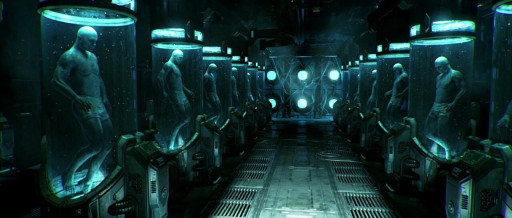
Its always difficult to tell who's made it to the family reunion and who is stuck in traffic
The Clone Army origin was only recently released, but has quickly become one of the dominant meta-strategies for rush builds. Rush builds have always been powerful, not just in Stellaris but in every competitive game. The Clone Army origin takes this to another level by offering massive early-game pop growth in exchange for a maximum cap on the number of pops of your founder species you can have in the galaxy at any one time.
The origin is powerful because it's a momentum-based origin. If origins were starships, Clone Army would be the starship that can go from unmoving to near lightspeed in a matter of seconds.The trick of course, is keeping that momentum and not faltering. Eventually you will be given the option to have your clones become a fully-fledged species capable of reproducing without the ancient clone vats that made them, or keep them as they are in order to have a special class of leaders with powerful traits.
Making the choice will also give you some minor opportunities to roleplay, imagining the controversy and debate amongst your clones over what the future of their species should be. The great thing is that neither of these two options really requires a specific playstyle. Even though your Founder species may be limited in number, nothing will stop you from taking aliens as slaves, or you inviting them in of their own free will, to give you a competitive economy outside of the early game.
If you opt to make your clones a fully-fledged species, you will be riding off of the benefits of a powerful start and now have a normal founder species to work with. There really aren’t that many downsides to this origin, other than you possibly getting bored of winning all the time!
So in summary, the Clone Army origin:
Creates a large amount of early economic and military momentum through massive pop growth
Gives you the option to keep your powerful clone abilities or discard them once you are finished with them
Doesn’t limit player choice or crimp the player’s playstyle while doing all of this
Does offer some minor RP opportunities
Whether you are looking for a strong start to your campaign or just want some interesting roleplay and narrative-building in your grand strategy game, these origins will give you what you are looking for. Choose carefully however, as your civilization’s origin will most certainly influence their final destination.





